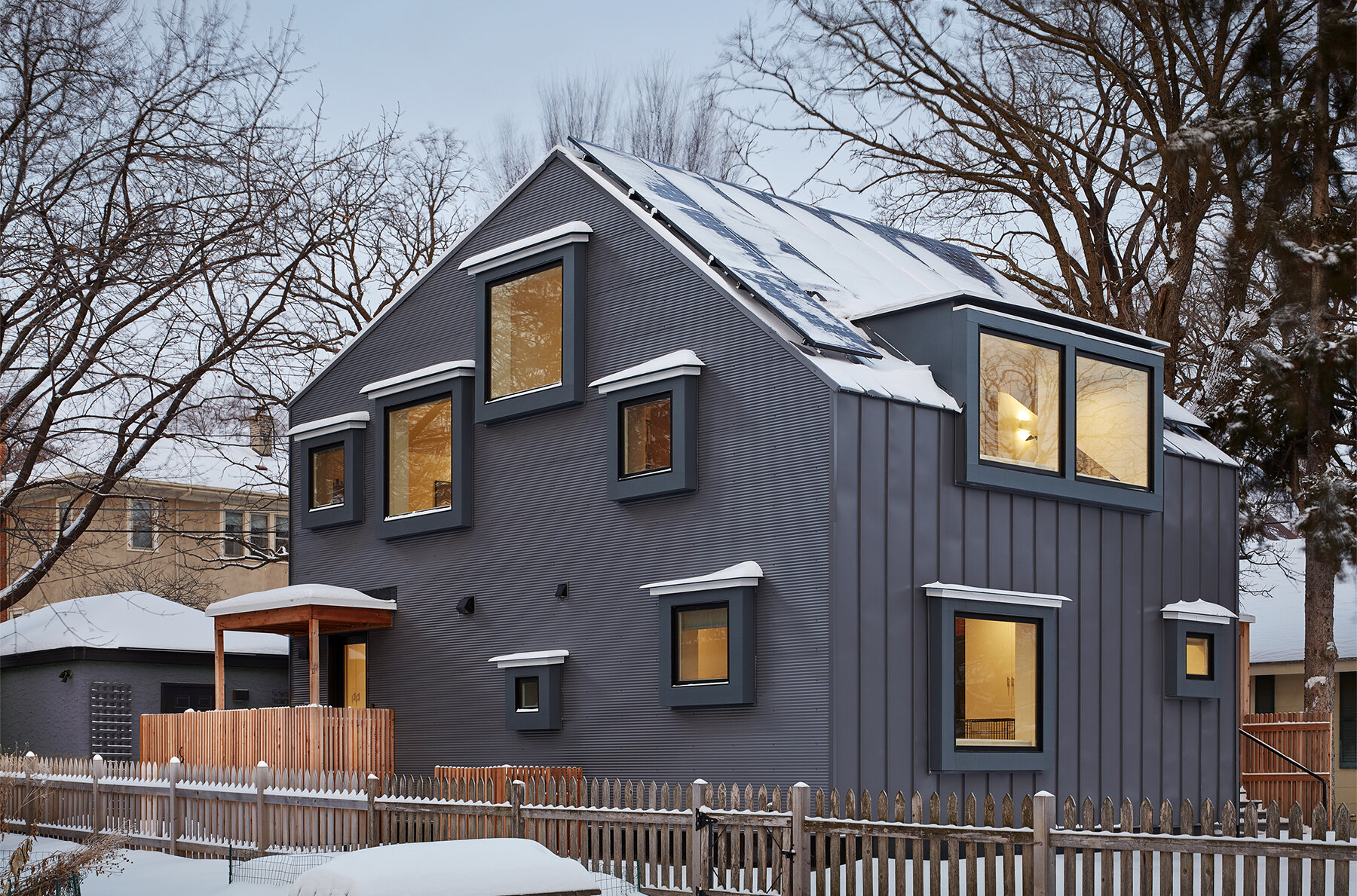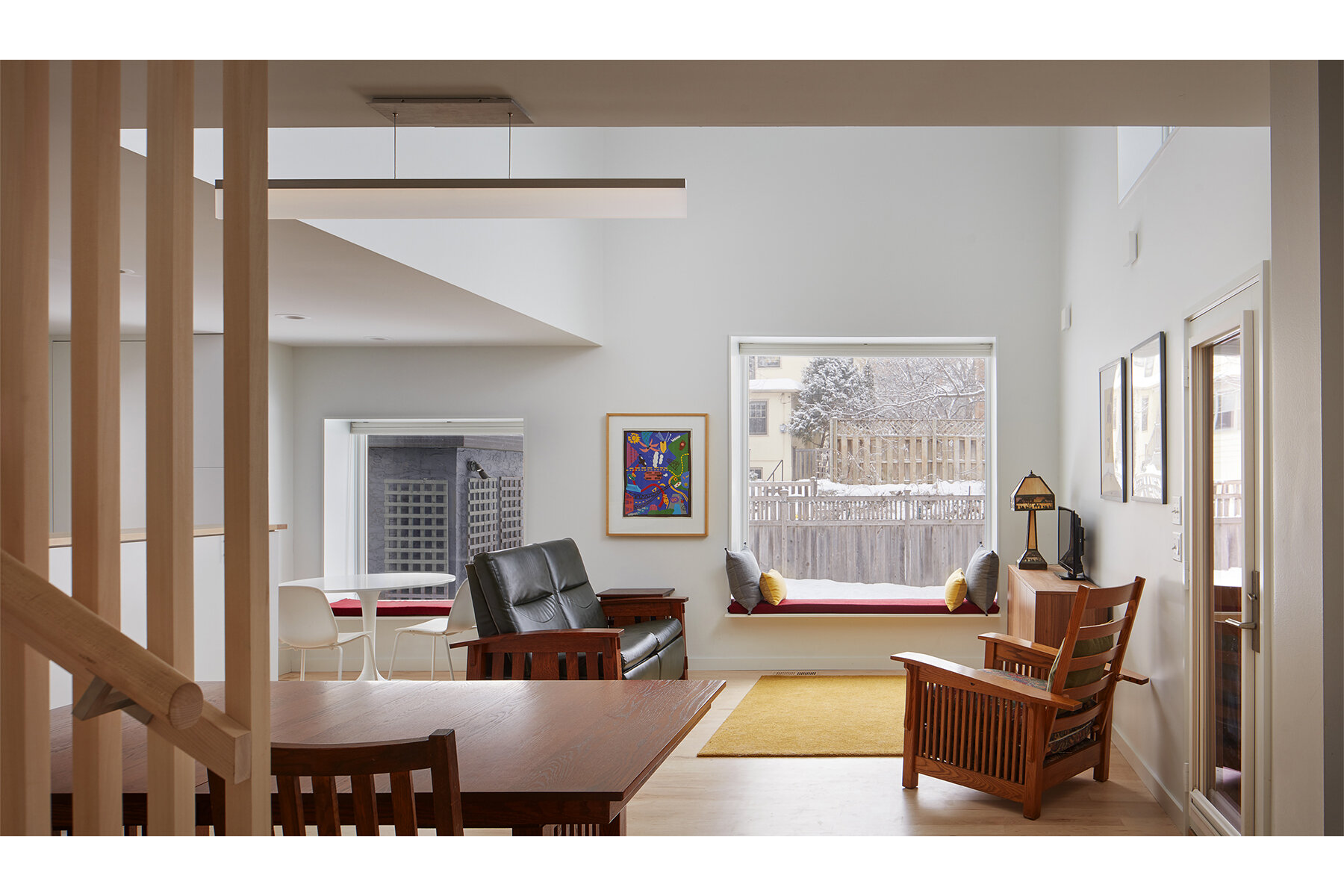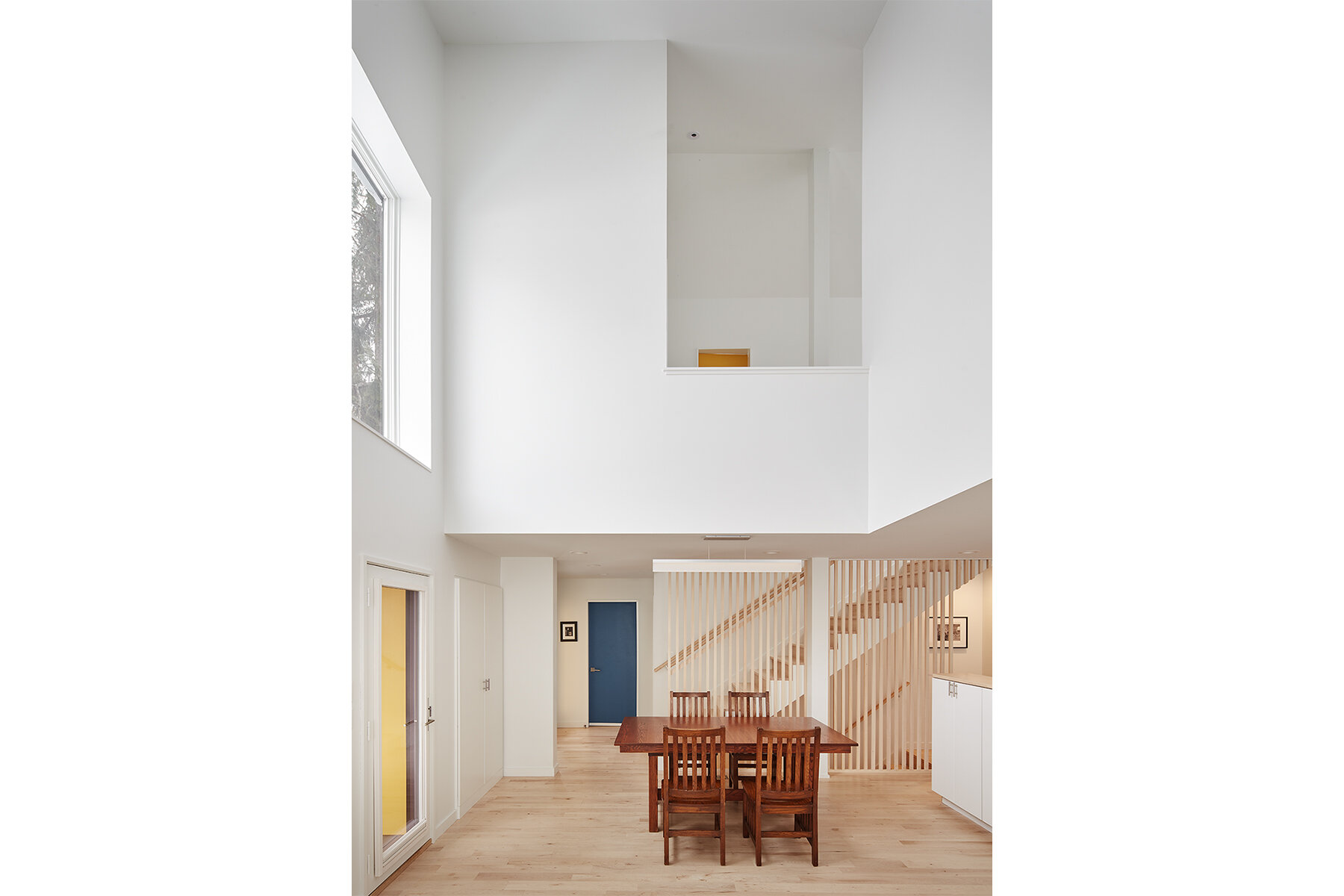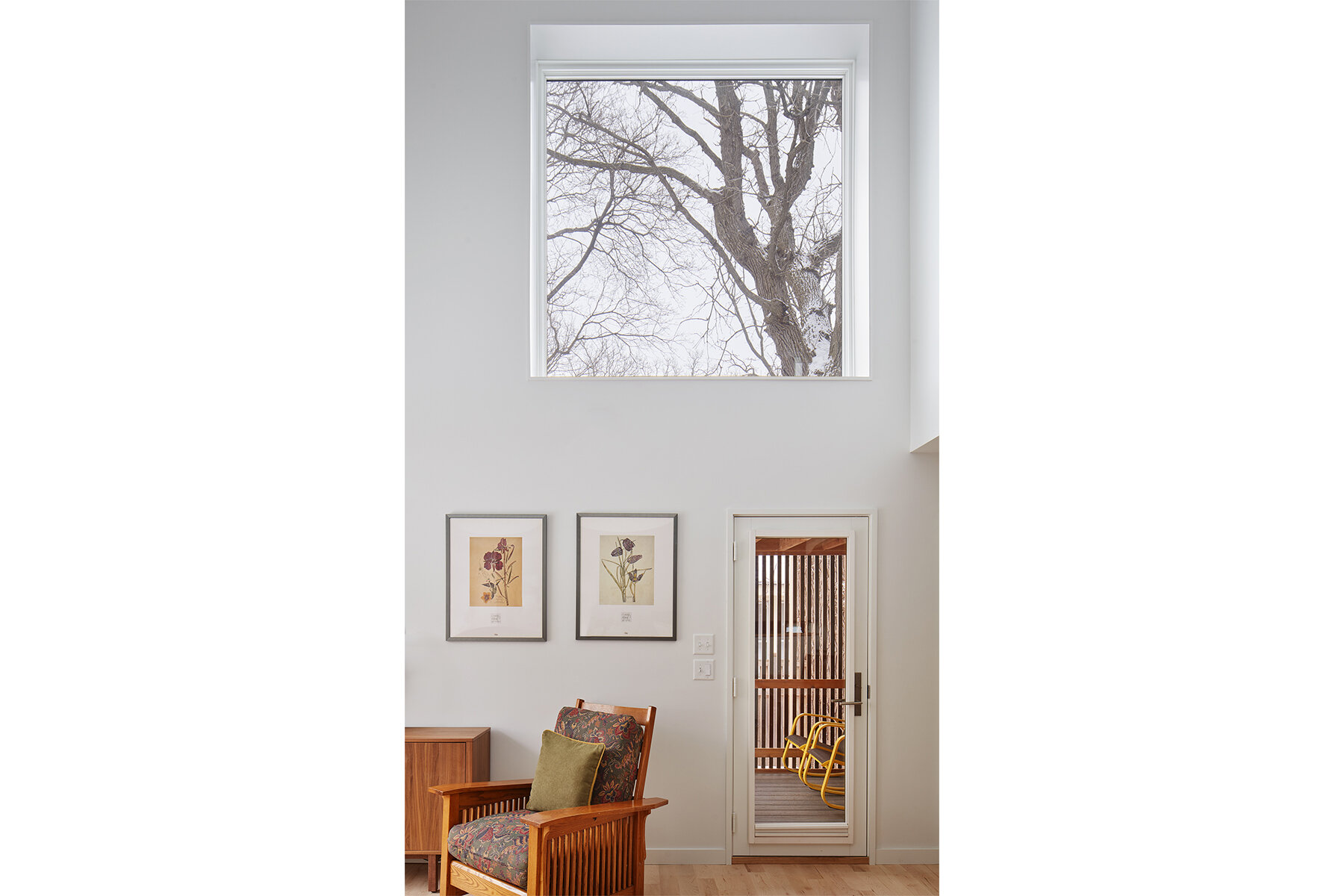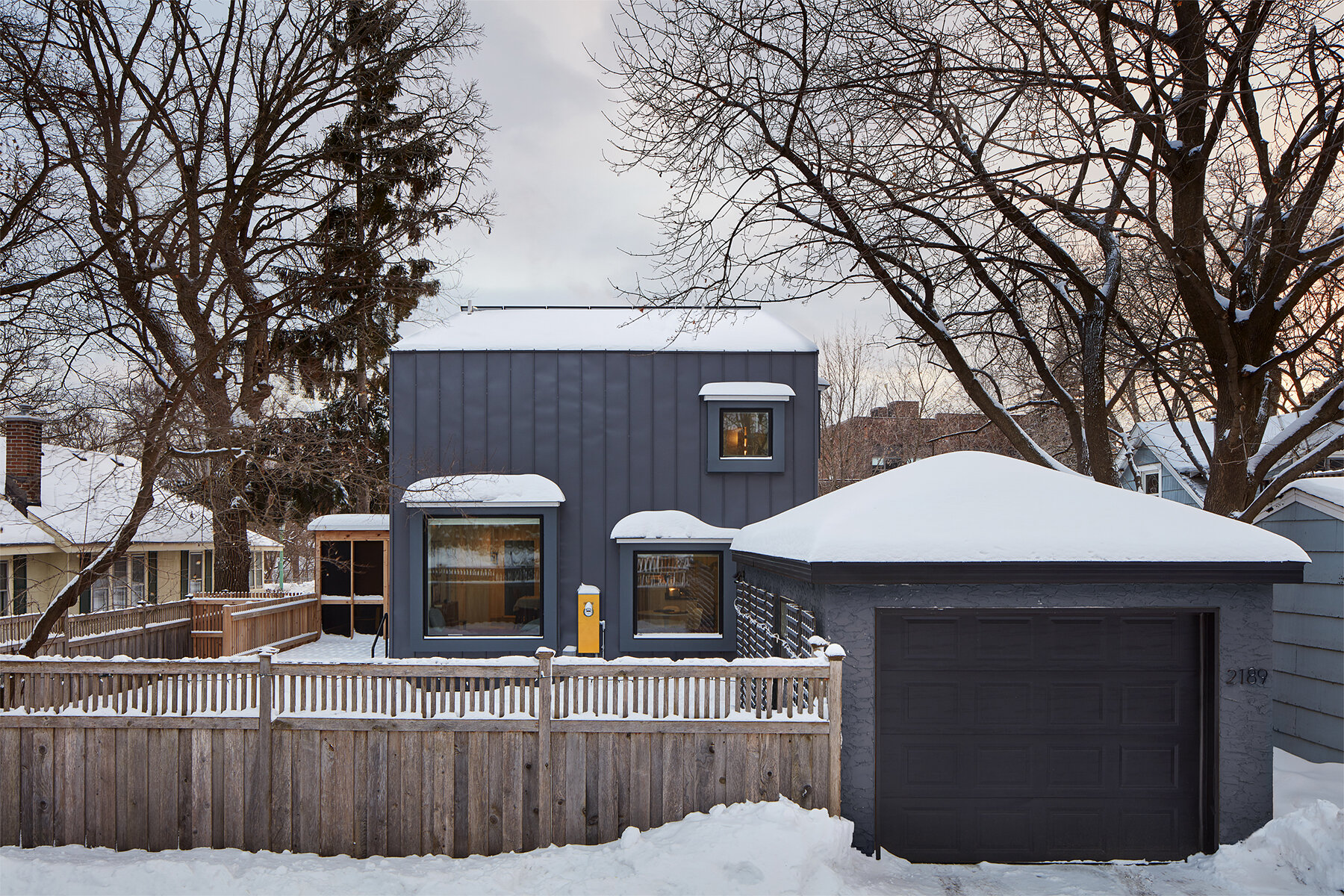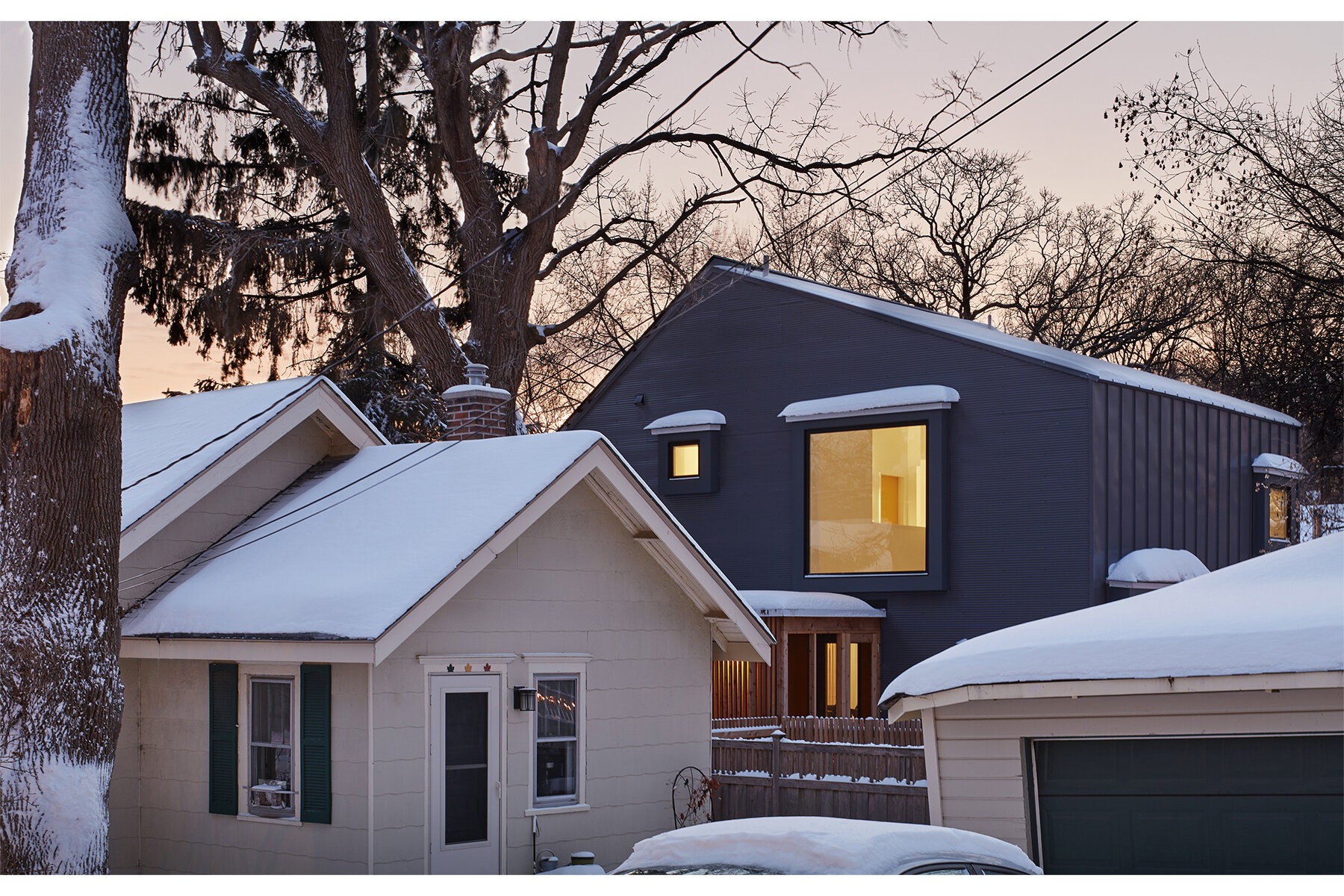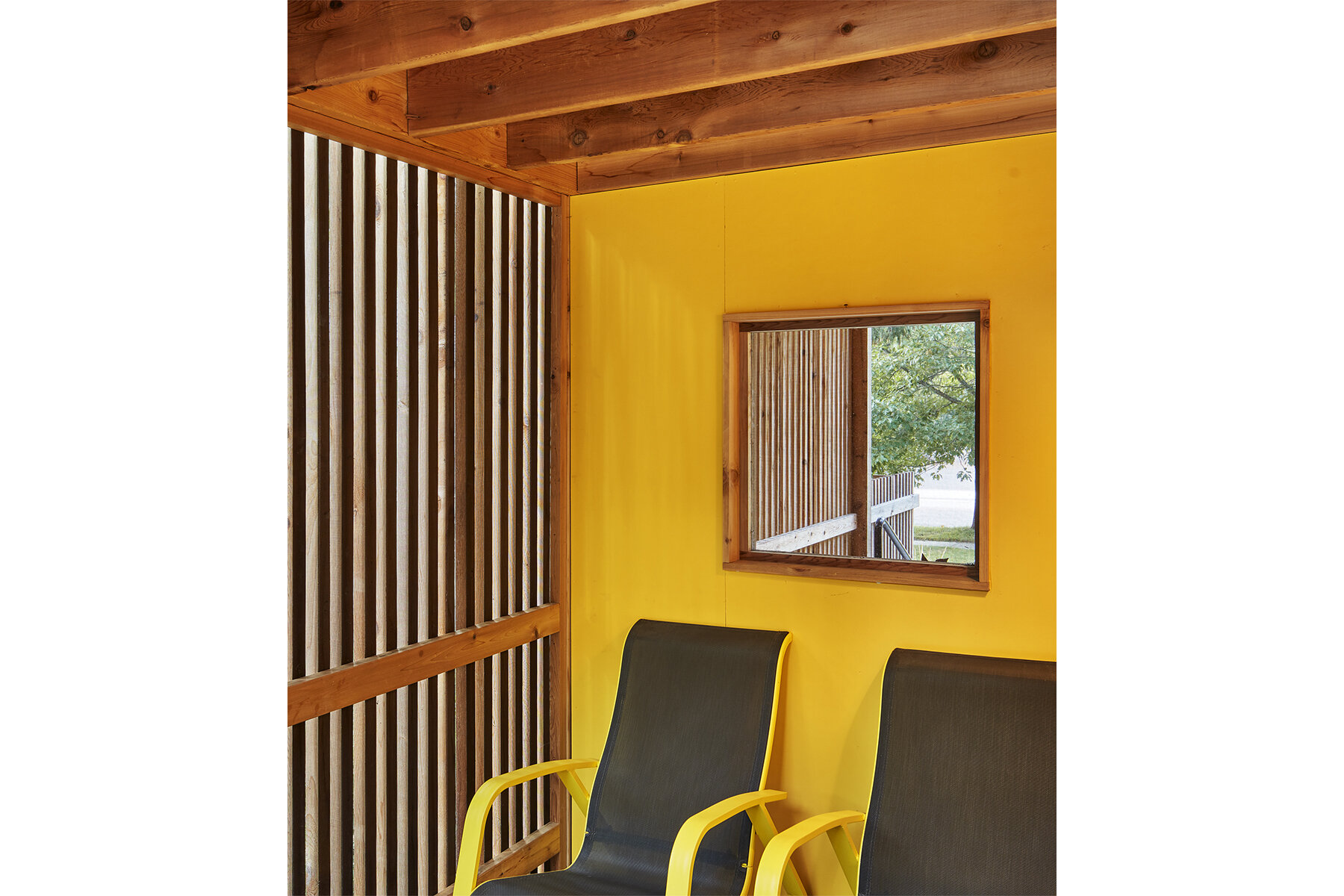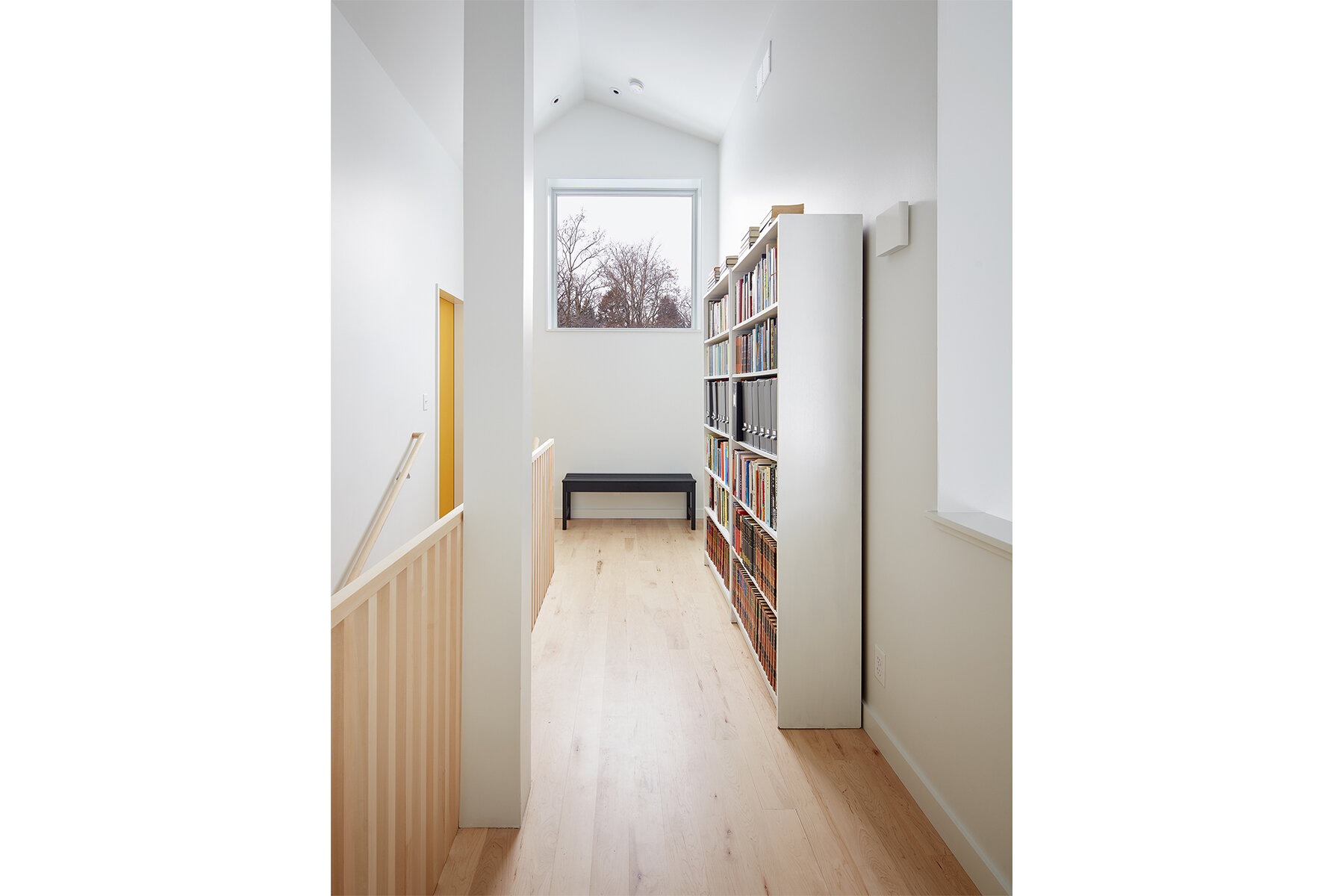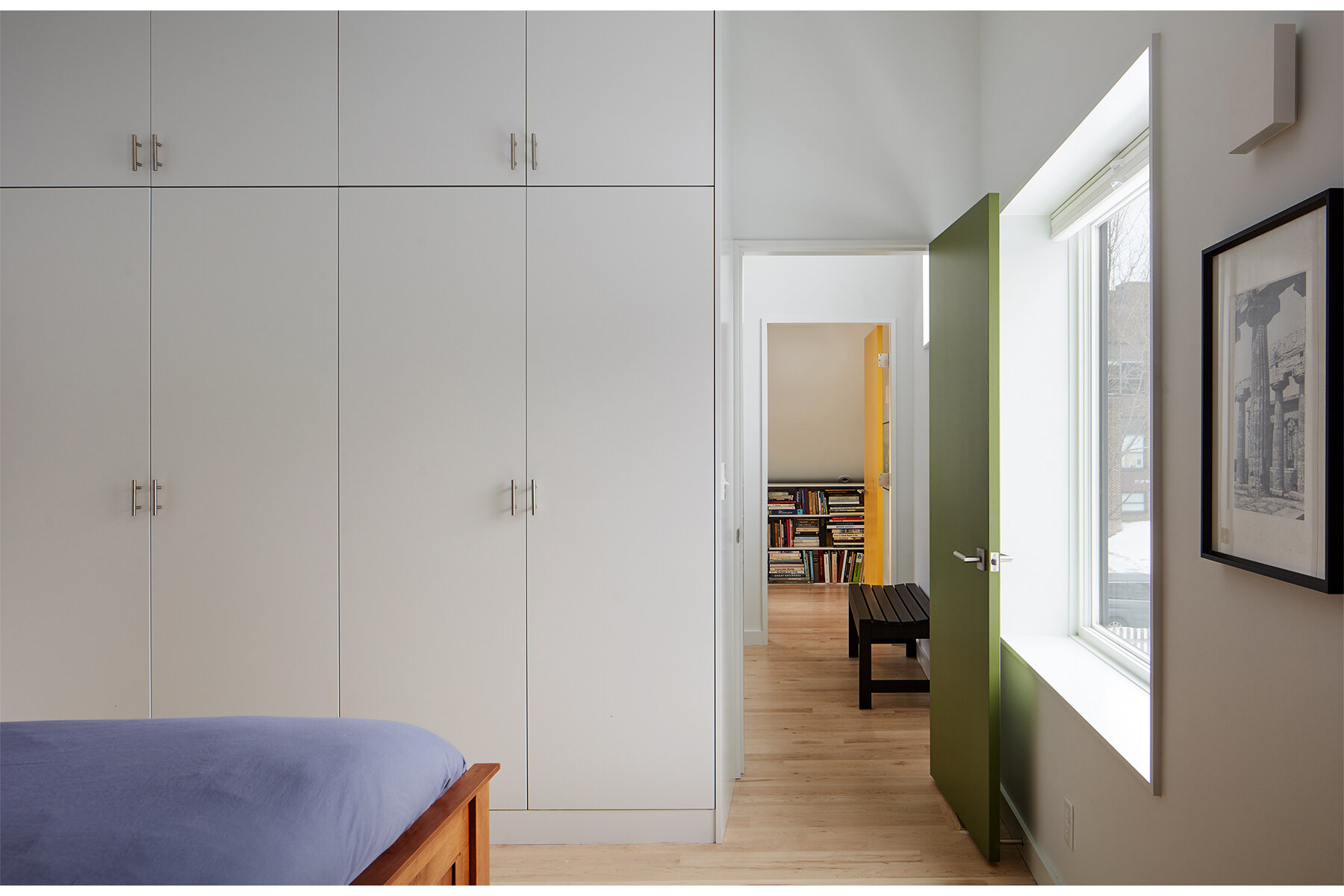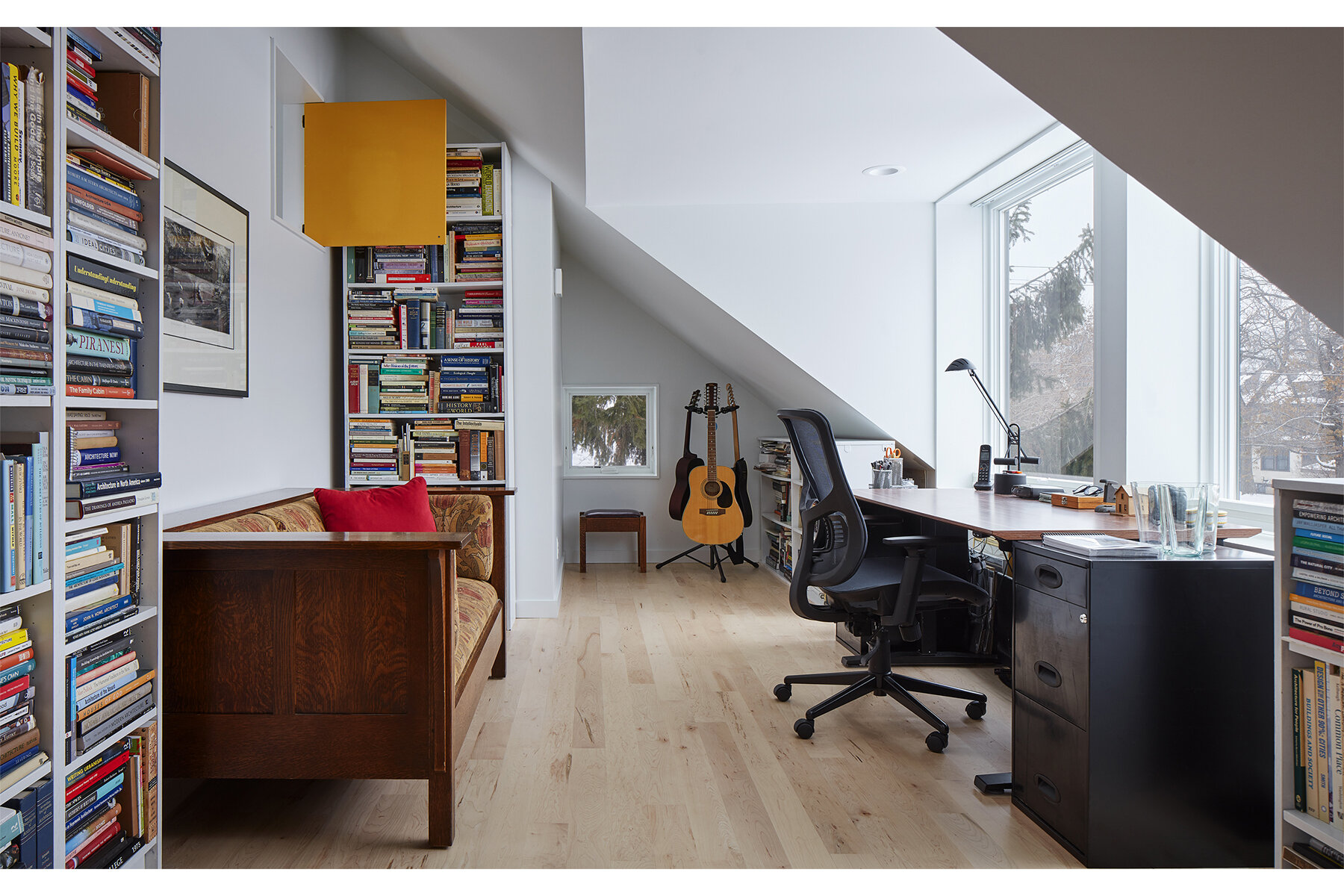A St. Paul Home Models a Sustainable Future for Urban Neighborhoods
The director of the Minnesota Design Center on his first experience working with a residential architect—and on the ways in which he approached the project as residential R&D
By Thomas Fisher, Assoc. AIA | October 28, 2021
Electric Bungalow—the name given to the home by Salmela Architect. Photo by Gaffer Photography.
FEATURE
I have written about architecture my entire career but have been a client of architects only twice in my life: once as a University of Minnesota dean participating in the design of Rapson Hall and now as the owner of a new house in St. Paul, designed by Salmela Architect. Like any relationship, that between architect and client requires complete trust, a lot of mutual respect, and a degree of faith in each other, something that I’ve had with David Salmela, FAIA, and Kai Salmela, Assoc. AIA, having written two books about their firm and visited most of their buildings.
With this house, I learned how much the role of the critic and the client differ. As a writer, I spend a relatively short amount of time in a building with its architect and client, just enough to understand the project and have something worthwhile to say about it. But as a client, I spent most of my unoccupied time for nearly two years thinking about—and sometimes dreaming or worrying about—this project. And now that it is done, I wanted to share some of my thoughts about it.
Images 1–4: The sizing and arrangement of the windows on the west elevation may appear whimsical to passersby, but on the inside, the reasoning for the placement of each window—interior privacy and treetop views—becomes clear. The 20-foot-high living area makes the relatively small home feel larger than it really is. Images 5–6: Views from the alley. Image 7: The back porch. Images 8–10: Second-level spaces, including the study. All photos by Gaffer Photography.
Site
The house stands on a 50-by-90-foot urban lot near my work, on an existing 20-foot-wide poured-concrete basement that once supported a 700-square-foot bungalow we demolished. That placement made the house as compact as those on either side and allowed us to save most of the existing trees, with ample space for a pollinator-friendly native landscape of clover, ferns, and reed grasses.
Despite the site’s dimensional limitations, it seems large socially. We have lived on the same block for 24 years and know the neighbors well. And our immediate neighbors are family: One daughter and her family live in our old house, directly behind the new one, and our other daughter and her husband recently bought the house next door. We did not intend to build a family compound; it just happened that way.
Plans
We wanted a house in which we could age in place, living on one floor if—or when—needed. With a living/dining area, kitchen, bedroom, laundry, and full bathroom on the main level and with wide doors, shower grab bars, and wood floors throughout, we can live in the house for a long time. In a nation that will have more retirees than children by 2035, such strategies should be more common.
The house may have begun as a custom design, but it has prototypical aspects and replicable details that deserve repeating, and I hope that others take what we have learned and the ideas we have developed here and do their own versions of it with these designers.
With a school across the street and family across the alley, the plan faces the main living spaces to the back. That may seem antisocial, but the alley is community space on our block. Meanwhile, a large front porch, wide stairs, and a generous walk open out to the street and encourage neighbors to stop by and talk.
Behind the front porch stands a screened porch and deck wrapped in the same vertical wood slats as the back porch on the other side of the house. Such wood-lined outdoor living areas expand the house’s useful space and make it feel like a cabin in the city.
Elevations
Since my youth, I have enjoyed picturing the plans of buildings from their elevations, fascinated by those that foil my best guesses. The seemingly random placement of windows in this house may thwart such sidewalk sleuthing, but that arrangement reflects our desire to block views of neighboring houses and grab vistas of trees and sky. I have admired elevational idiosyncrasy in other Salmela Architect projects, and it made sense on our tight, urban site.
We also wanted a low-maintenance exterior. Unable to afford Richlite, which Salmela Architect often uses, we went with dark-gray metal cladding, with standing seams to simplify the attachment of solar panels and with horizontal corrugated metal on the side elevations, echoing the surrounding clapboard houses. And the house’s dark exterior makes it visually recede, something that our neighbors seem to appreciate.
Sections
To go carbon-free, we capped the gas line into the house, installed a 5.2-kilowatt solar array on the south-facing roof, and put a Tesla battery in the basement. On sunny days, we generate more power than we need, selling the excess to the power company. At night, we draw down the battery, making us the only house on the block with lights on during blackouts.
The solar-angled roof created a lot of interior volume, which we tried to capture by omitting an attic. That resulted in a 20-foot-high living room and a 13-foot-high hallway, making this compact house—only 816 square feet on the first floor and 636 on the second—seem much larger. A tall house does not feel so small.
To create the illusion of more space, we also projected the windows beyond the exterior walls. Some became giant window seats, allowing us to accommodate more people with less furniture, and all the windows have deep sills, adding another foot to the dimensions of every room. On the exterior, the projecting window boxes, each with its own Richlite roof, also add dimensionality to what is otherwise a simple metal shed.
Prototype
As a client, I view Salmela Architect’s fees as R&D funding to create a three-bedroom, two-bathroom, solar-powered, aging-in-place, environmentally friendly modern house with enough flexibility of form and fenestration to adapt to any lot. It may have begun as a custom design, but this house has prototypical aspects and replicable details that deserve repeating, and I hope that others take what we have learned and the ideas we have developed here and do their own versions of it with these designers.
As a critic, I take away something else: the limits of language to express what is most memorable about architecture. I did not anticipate the delights of watching the morning sun illuminate the breakfast table, of squirrels spying on us through our high windows, or of the evening sun spilling light down the stairs, setting the house aglow. Such experiences are the real rewards of inhabiting a work of architecture, experiences that evade the critic’s eye and, in the end, elude the words to describe them.
The jury for the 2020 AIA Minnesota Honor Awards, the state’s most prestigious award for building design, gave this home a Commendation for Excellence in Design for Energy—one of the 10 principles included in the AIA Framework for Design Excellence. The home also won a 2021 American Architecture Award; it was the only Minnesota project to receive the award. The project team included Salmela Architect, Malini Srivastava, AIA, Meyer Borgman Johnson, and Cates Fine Homes.


